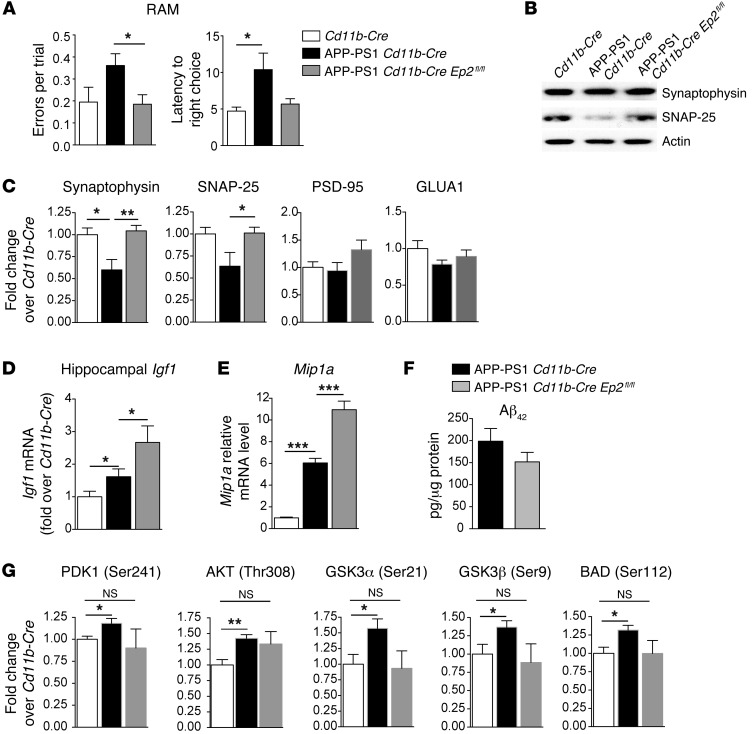Figure 7. Effects of microglial Ep2 deletion in 9-month-old male APP-PS1 mice on spatial memory performance, presynaptic protein levels, and PI3K/AKT signaling.
(A) Cd11b-Cre, APP-PS1 Cd11b-Cre, and APP-PS1 Cd11b-Cre Ep2fl/fl cohorts were assessed for spatial memory performance in the RAM, using mean errors per trial and latency to make a correct choice as outcome measures (n = 7–11 per group). Whereas APP-PS1 Cd11b-Cre Ep2fl/fl and Cd11b-Cre animals made similar numbers of errors per trial during the course of testing, APP-PS1 Cd11b-Cre mice made significantly more (*P < 0.05, Mann-Whitney U test). Cd11b-Cre and APP-PS1 Cd11b-Cre Ep2fl/fl mice also made the correct choice more quickly than did APP-PS1 Cd11b-Cre mice (P < 0.05). (B and C) The loss of synaptophysin and SNAP-25 observed in APP-PS1 Cd11b-Cre mice was reversed in APP-PS1 Cd11b-Cre Ep2fl/fl mice (*P < 0.05, **P < 0.01, Student’s t test; n = 5–6 per group). The postsynaptic proteins PSD-95 and GLUA1 were not changed. (D) Increased Igf1 mRNA in APP-PS1 Cd11b-Cre Ep2fl/fl versus APP-PS1 Cd11b-Cre mice and in APP-PS1 Cd11b-Cre versus Cd11b-Cre mice (n = 6–10 per group; *P ≤ 0.05, Student’s t test). (E) Increased Mip1a mRNA expression in APP-PS1 Cd11b-Cre Ep2fl/fl versus APP-PS1 Cd11b-Cre hippocampus (n = 8–13 per group; ***P < 0.0001; Student’s t test). (F) Cerebral cortex from APP-PS1 Cd11b-Cre and APP-PS1 Cd11b-Cre Ep2fl/fl mice was assayed for Aβ42 levels by ELISA (P = 0.17, Mann-Whitney 2-tailed t test; n = 5–6 per group). (G) Quantification of PI3K/AKT phosphoproteins in cerebral cortex of Cd11b-Cre, APP-PS1 Cd11b-Cre, and APP-PS1 Cd11b-Cre Ep2fl/fl mice showed significant induction of the AKT signaling pathway in APP-PS1 Cd11b-Cre mice that was absent in APP-PS1 Cd11b-Cre Ep2fl/fl mice (*P < 0.05, **P < 0.01, Student’s t test; n = 4–5 per group).

